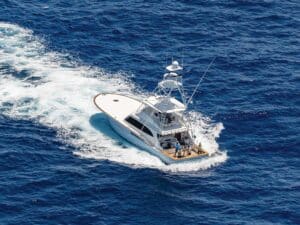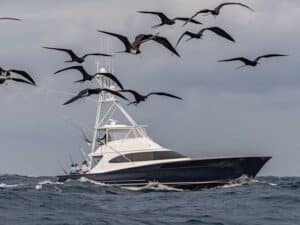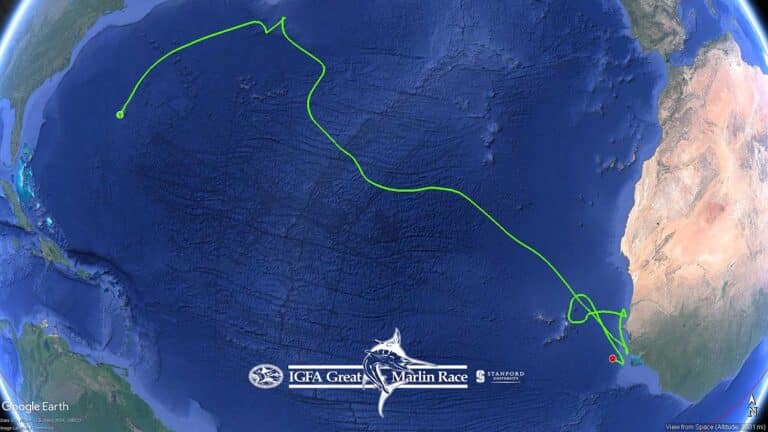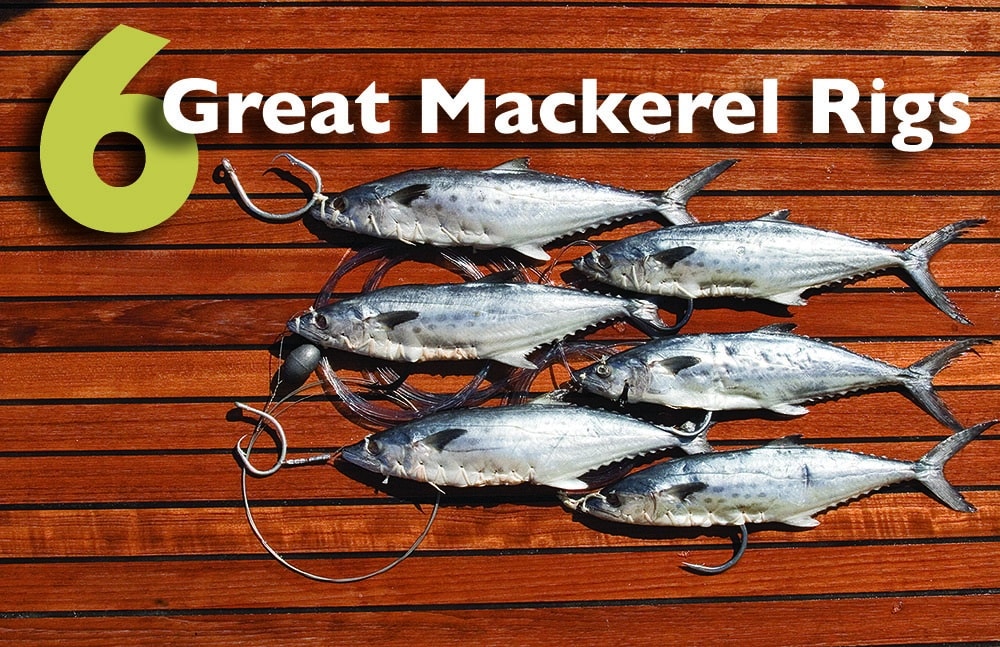
Ballyhoo, mullet, bonito and squid all make great baits, but if you can match the size Spanish mackerel to the size of the billfish you are seeking, there is simply no better dead bait to pull. All the billfish and tuna species will swim out of their skin trying to eat one!
Other mackerel species like cero, sierra and the Australian “doggie” mackerel also make great baits since they share the same compressed body shape and differ from Spanish only in size and coloration. However, the good old Atlantic-based Spanish mackerel trumps them all on availability.
It’s not hard to catch baby Spanish mackerel in sizes that would make them wonderful baits for the smaller billfish species like white marlin, striped marlin and sailfish, but doing so can cause conflict with both state and federal fisheries officers. Fines for keeping illegal mackerel are hefty, making small ballyhoo and finger mullet a better option for sailfish baits. When chasing marlin over 200 pounds, however, Spanish mackerel represent the dead bait of choice. Use them on your tuna rigs too, giant bluefin tuna love them.
The Florida gill-net ban in state waters helped Spanish mackerel populations make a big rebound in the Gulf of Mexico and along the eastern seaboard. This spawned a huge recreational fishery since current mackerel populations allow even the least-skilled anglers to catch their daily limit. Getting a nice meal for the family and a supply of mackerel bait is easy and fun for all.
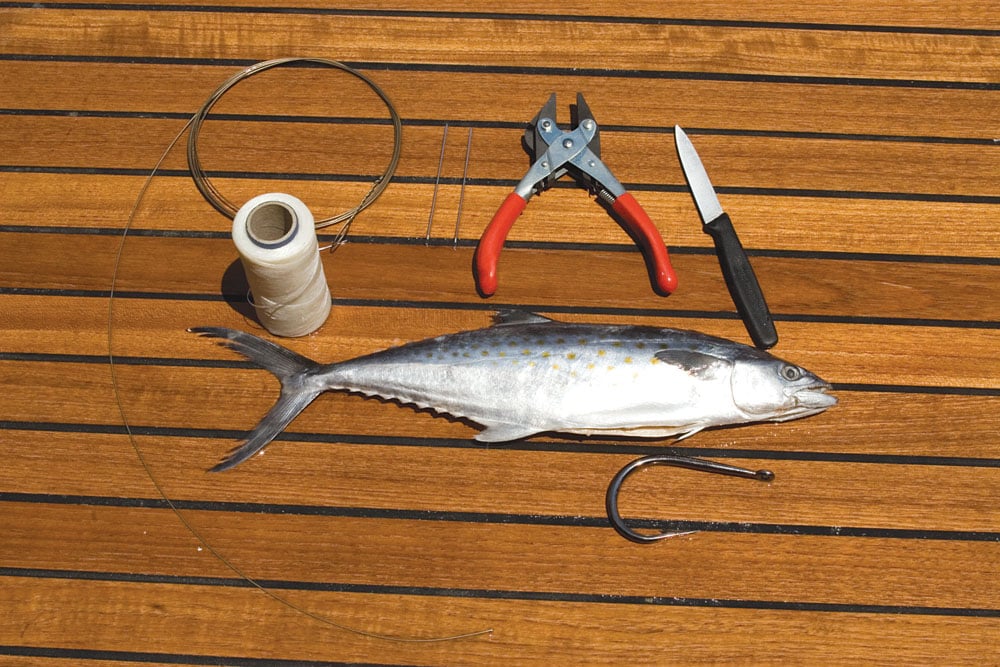
Catching and Preparing Spanish Mackerel for Marlin Fishing
Once you locate one of their large schools, Spanish mackerel fishing is easy fishing. Spanish mackerel like to congregate together, so slow-troll or cast small spoons, plugs or nylon or feather jigs for nearly foolproof action. Soft rubber minnows or curly-tail grubs fished on lead jig heads also work well, but bring plenty of replacement tails. A mackerel’s sharp teeth quickly annihilate rubber lures or skirts. In a pinch, threading a couple of beads on a short length of wire ahead of a bare hook works amazingly well.
Most tackle shops know where to find the schools of Spanish mackerel in the area, so check with them before heading out. Once you get close to the recommended spot, look for the fleet of boats that are sure to be working the school. Approach the mackerel fleet slowly and quietly, trying not to cross or get into another boat’s circle. Anglers get their limits on Spanish by staying in a constant turn, circling the spot where they got their last bite. A GPS plotter with the track line on helps you stay in the zone and out of others space.
Drifting and chumming with small glass minnows also works great for Spanish mackerel fishing. Small, shiny spoons, jigs or flies all work well, and when fished with trout-weight fly rods or panfish-size spinning outfits, Spanish put up strong fights with blistering high-speed runs. They make a great light-tackle game fish that will thrill younger family members. When eaten fresh, Spanish mackerel also make terrific table fare, although Dad needs to fill his bait requirements before any go on the grill!
While you can easily catch your own, several companies specialize in catching and preparing Spanish mackerel for dead bait trolling rigs. However, the quality of frozen mackerel bait varies drastically from one shop to the next. You can troll a well-prepared mackerel rig for hours without it washing out, and it won’t come apart under the savage strike of a blue marlin to sabotage a potential hookup. When you find a shop that consistently supplies you with top-quality mackerel baits, stay with them. Even if their bait is slightly more expensive, it will be worth the extra money in the long run.
When catching your own mackerel, you should always carry an extra cooler filled with crushed ice. As soon as you catch your first Spanish, add a pound or two of salt, a cup of baking soda, a capful of formalin solution (formaldehyde gas in aqueous solution) and a large bucket of seawater.
Remove the entrails and rinse out the body cavity of the mackerel as soon as it is dead. Do not leave the fish on the deck, in the sun or in a livewell filled with warm water any longer than absolutely necessary. Since bacterial activity doubles with every 18-degree increase in temperature, potential baits must go into the cold brine almost immediately.
This homemade brine rapidly chills the mackerel to the freezing point of salt water. Water conducts heat much better than air and brings the baits’ core temperature down in a small fraction of the time it would take in an air-filled freezer. Pre-chilling any kind of baitfish to near freezing before they go into the freezer represents one of the best-kept secrets in the bait business.
The baking soda helps preserve the fish’s live-color patterns. Anytime you see frozen baits with all their colors intact, you can bet that they were put into a brine/baking soda mixture as soon as they were caught.
A single capful of formalin per 20 gallons of seawater will not cause major changes in the mackerel’s flexibility but will inhibit the bacterial activity that makes thawed bait soft. An excess of formalin may coagulate too many proteins, turning the mackerel into something with a mackerel shape but with the consistency of shoe leather. The one-time living thing becomes a fish-shaped lure under the influence of the formalin juice. While it’s almost impossible to get an overly juiced mackerel to swim, it makes a pretty good skip bait that will splash, flop (and often rotate) behind the boat for hours or even days without washing out. Such specimens make popular high-speed mackerel baits for blue marlin.
After soaking in ice-cold brine with either formalin or another potent bactericide, frozen baits compare favorably with ones caught and rigged immediately. It’s all in the handling!
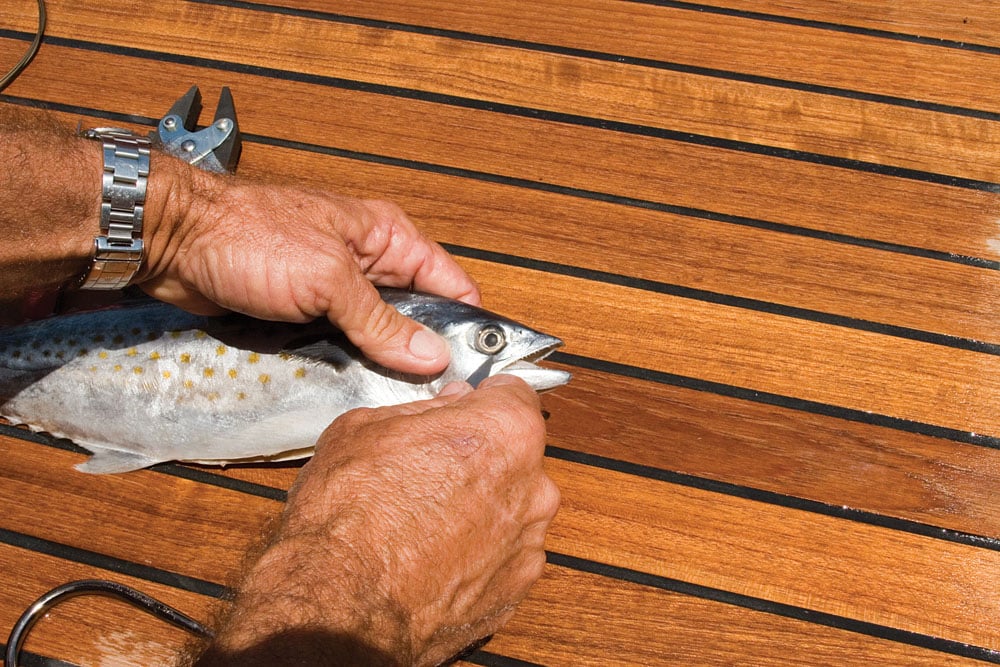
How to Rig Mackerel for Marlin
Anyone can run a leader through a lure, crimp on a hook, drag it around at 8 knots and catch a marlin. But it takes both angling and bait-rigging skills to catch billfish consistently on dead natural baits. The skills needed for rigging mackerel for trolling are becoming increasingly rare in both anglers and crew these days.
Having said that, a Spanish mackerel represents one of the easiest fish to rig if you know a few basic principles. First, always take out any baitfish’s eyes. If you don’t take them out before rigging the bait, they will eventually “bug out” and cause the bait to quit working properly. Now you’ll still have to bring in the bait and waste precious fishing time to remove the protruding eyeballs. It’s much better and more professional to get the eyes out before rigging the bait.
However, the real key to success involves making certain that your baits display what scientists call “bilateral symmetry.” Most mates just say, “Make sure you are pulling dead center from the top of its head.” Whether you rig your mackerel on mono, cable or wire or position the hook in the body cavity or on top of the head, the same principle applies. The pulling point must run down the exact center of the bait’s body when looking down the fish’s back.
How far from the tip of the fish’s nose you position the pulling point also makes a difference in the action of trolled mackerel baits. In Cairns, we often pull our biggest baits from the extreme tip of the bait’s nose. This tends to lift the bait’s head so that it flaps or slithers along the surface and does not dig down and try to swim. In rough seas, it is almost impossible to keep a 20-pound Australian scaly mackerel or narrow-banded Spanish mackerel swimming from the outrigger clip — the water resistance just puts too much drag on the clip.
Also, when using a Spanish mackerel to bait and switch a billfish raised to a teaser, you want the angler to see the bait so he can watch the billfish eat it, which ensures a much higher hookup ratio. Keeping the bait on the surface makes this much easier. Pull head-rigged mackerel with J- or circle hooks sewn on top of the head and close to the tip of the nose to keep the bait in sight, on the surface.
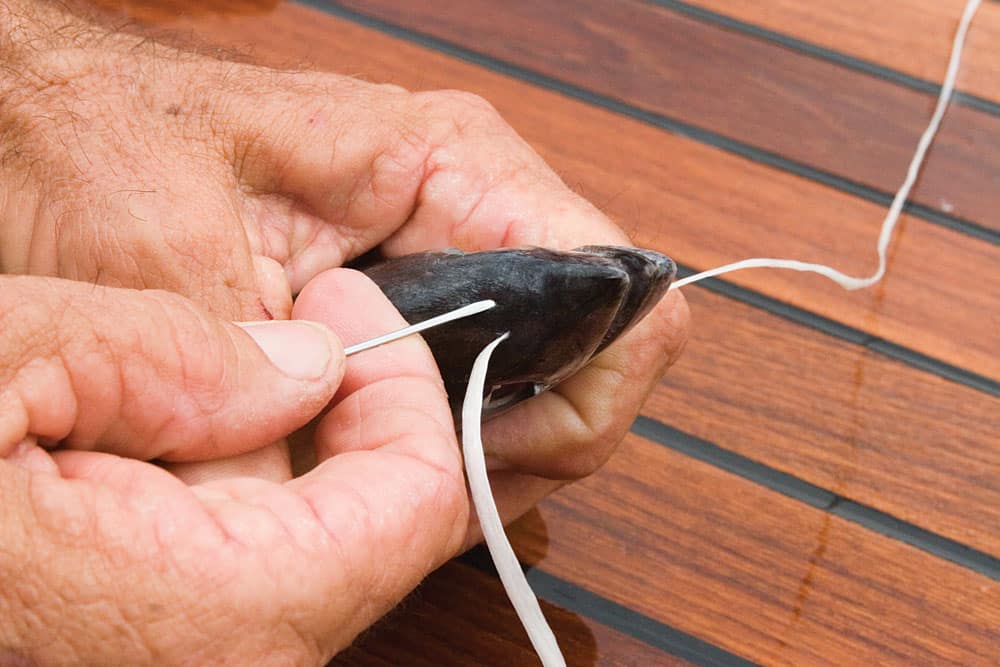
How to Rig Mackerel Baits in the Head
There are several ways to head-rig a mackerel or any other natural bait, for that matter. Again, there is one common requirement: Keep the hook dead center or the bait will spin and not swim straight. This is incredibly important when rigging mackerel for trolling.
An old favorite method used for dead bait trolling starts by putting three half hitches (a clove hitch and one extra half hitch) of 130-pound Dacron around the bend of the hook and leaving two tag ends approximately 18 to 24 inches long (waxed nylon rigging twine can also be used, but twine tends to cut through the bait and may also loosen up).
Using a bait needle with a closed eye, pull one tag end at a time down through the fish’s head and out through the lower jaw. Lay the hook next to the bait with the eye of the hook forward, past the fish’s nose. Choose a tag end that comes off the hook to go through the head marginally off center to the same side the tag end comes from the hook. Do not try to go through the exact center of the skull. A small bone that runs down the center of the mackerel’s skull will cause the needle to slip slightly off to one side. The idea is to thread each tag end slightly off center, then tie the ends tightly together under the fish’s mouth so that the mouth is held shut and the hook lies exactly dead center on top of the head.
The hook should be close to the nose for skip baits and directly above the front of the eyes for a swimming bait. Use waxed twine to sew the fish’s mouth and gill plates shut, sew the head to the body, and either sew or super-glue the body cavity shut.
In one variation of this rig, a bushing is created between the hook and the mackerel’s head by wrapping waxed thread tightly around the Dacron line. Finish off the wrap with a knot to keep the twine from unraveling. In any case, a significant percentage of head-rigged baits stop working properly when one of the rigging lines loosens or tears through the head causing the hook to pull slightly off center. Bilateral symmetry must be maintained to keep the bait from spinning.
The hook can also be attached to a bait’s head by threading the Dacron or waxed twine through the bait’s eye sockets. Its mouth, gills and body cavity must still be sewn up with twine, but a loop of Dacron through the eyes will self-center under pressure, and baits rigged in this fashion usually swim well. Do not leave too large a connecting loop in the Dacron or the hook may foul in the bait while being trolled or during a marlin attack.
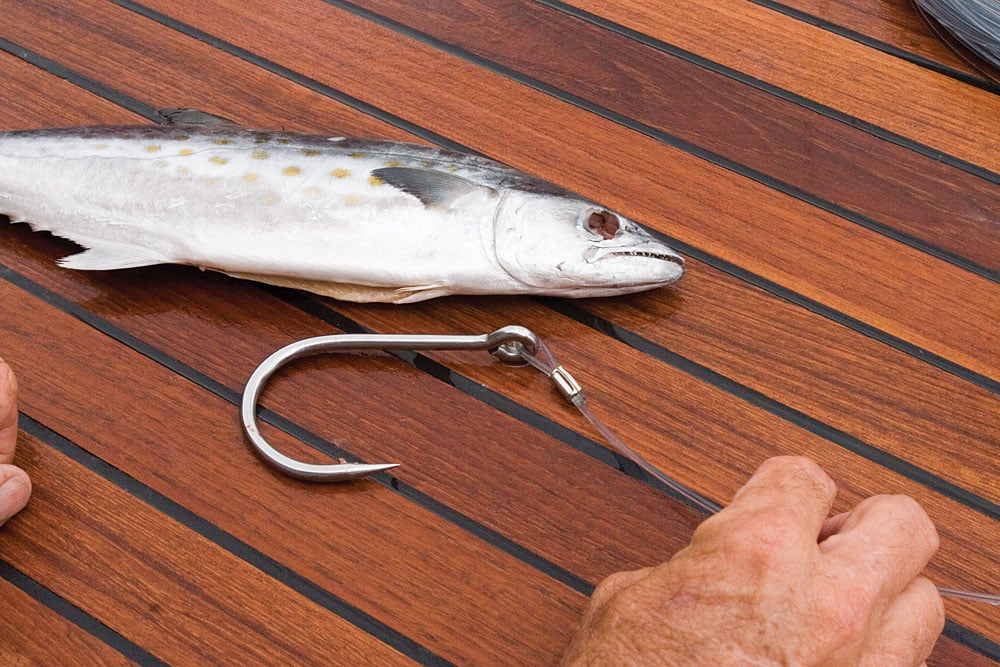
How to Rig Mackerel Baits in the Belly
A mackerel rigged with a hook in its belly is the easiest of the mackerel rigs to master, and it also results in bait that swims with incredible consistency. Any mate worth having on board can make a mackerel swim like crazy without using any lead weight. (Hence the old saying, “The bigger the weight, the dumber the mate!”)
Again, the key to this bait is making sure you are pulling from dead center. Whether you choose piano wire, cable or monofilament nylon for the leader, the little skull bone makes it want to slide slightly off center when the leader is threaded through the bait’s head and the eye of the hook. Use an ice pick, a bait needle or the point of the hook itself to make and center the hole. After twisting the wire (or crimping mono nylon or cable) into a loop, sew the mouth and gills shut, secure the head to the body and close the body cavity.
Then make the special “secret” stitch. Take a bait needle threaded with 18 inches of heavy waxed twine and go through the bait’s eyes, making sure the needle also goes through the loop of the leader. Next, tie the twine tightly down on top of the bait’s head inside the loop of the leader. Tug on the leader so that it pulls against the loop of twine. The twine will self-locate so the pulling force comes equally from both sides of the eye sockets and the bait will swim. Too easy!
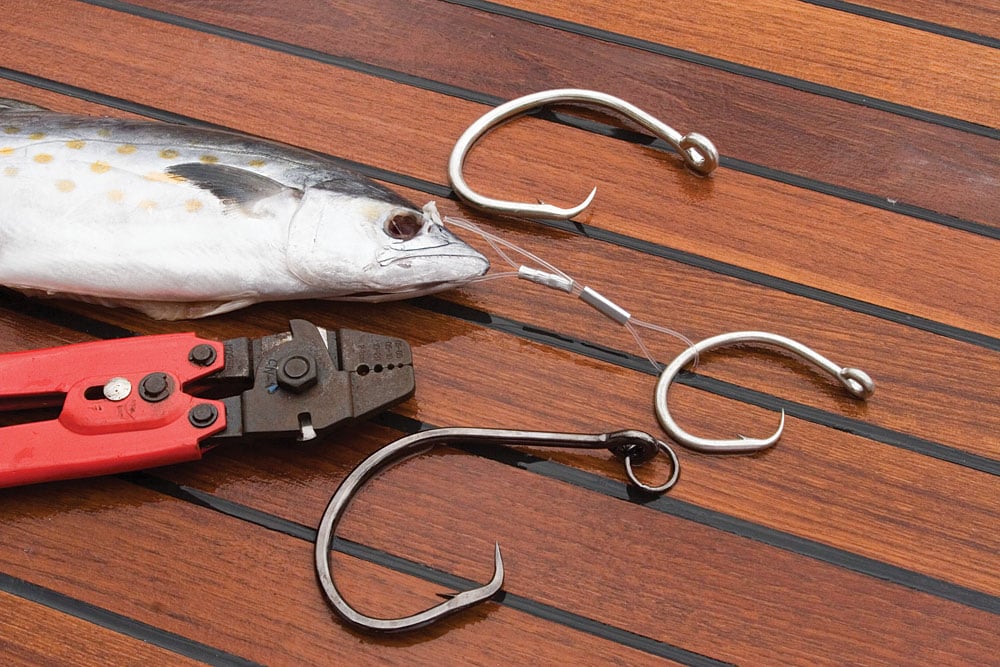
How to Rig Mackerel Baits with Circle Hooks
Most crews rig their circle hooks on top of the bait’s head because belly-rigged circle hooks have a dismal hookup ratio. And many – maybe even most – head rigs eventually cease to work over time.
After years of frustration and experimentation, my crew and I finally figured out the obvious. You should just rig a circle hook like a J-hook but without placing the hook in the belly of the bait.
Using 130- to 200-pound mono, rig a hookless bait exactly the way you would rig one with a belly hook — push the mono down through the skull and out the bottom jaw. Then cut the “leader” down to about 6 to 8 inches and add another sleeve. Pull the second sleeve tight around the bend of a circle hook (or J-hook, for that matter) and you now have a bait guaranteed to work without spinning. This also puts the hook an inch or two in front of the rig, allowing the circle hook to find its way into the corner of the jaw without interference from the bait (use mono instead of Dacron or twine to reduce the chance of hooks fouling in the bait). It’s pretty simple, but took way too long for us to finally figure out.
No matter which way you choose to rig them, Spanish mackerel rigs get the bite — and that’s really what this whole game is all about.
